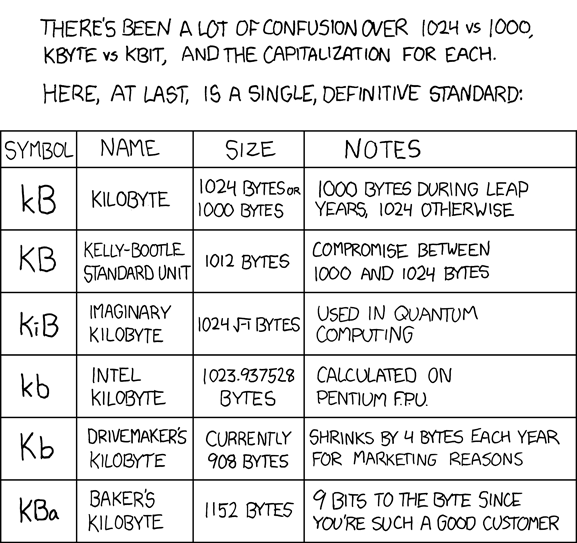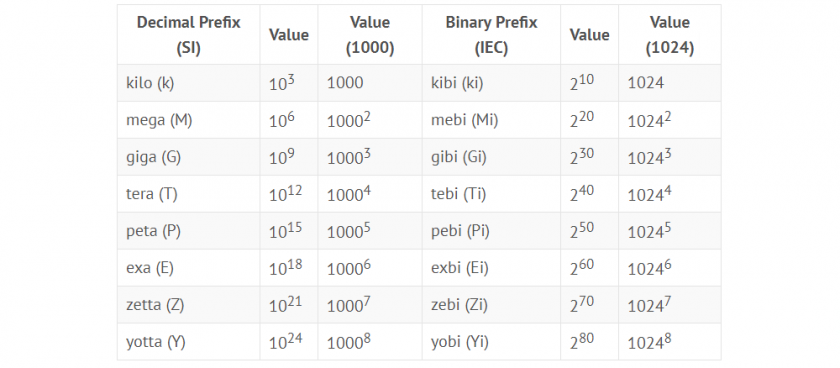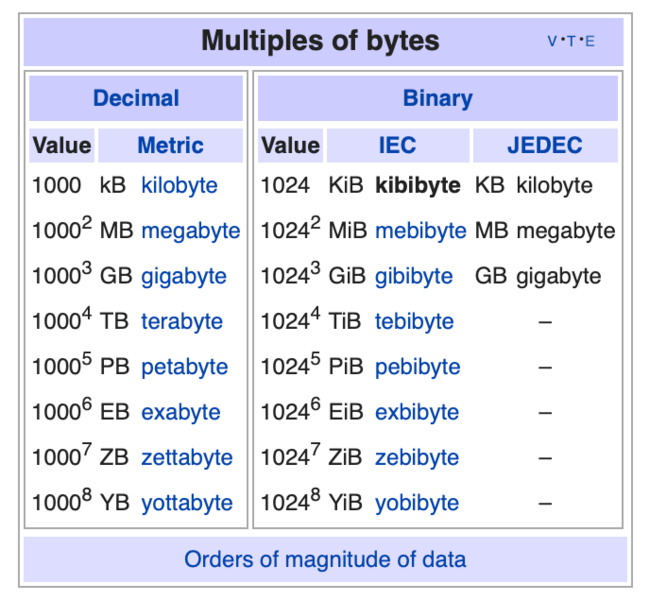Storage Units
I fear that most of the technical articles on the Internet misinterpret some of the common storage units.

This article does a good job at clearly providing the relevant information:
A kilobyte is made up of either 1,000 or 1,024 bytes. This distinction can be a little tricky and has to do with the difference between binary math (which computers rely on) and base-10 math (which most humans use in daily life). In practical terms, both definitions of kilobyte are used. In some cases, a distinction will be made between a kilobyte (1,000 bytes) and a kibibyte (1,024 bytes), though this is less common.
The Real Story
Apart from the funny picture above (Baker's Kilobyte?), the real story can be uncovered by referencing the picture below. Thanks to this original article that does a great job at providing the valuable information.

So while most people might misinterpret "kilo" as 1024 when it comes to storage units, the right way is thus "kibibytes". It would be an interesting conversation to discuss kibibytes as most people may not be aware, and this would make you look incredibly smart (and correct) :)
Here is another great image for reference:

Based on the image above, the following should be used using capital letter first, then lowercase i and then finally capital B for bytes.
- KiB
- MiB
- GiB
- TiB
- PiB
- etc.
Reference Articles
- https://danielmiessler.com/blog/the-difference-between-kilobytes-and-kibibytes/
- https://study.com/learn/lesson/data-storage-units-kb-mb-gb-tb.html
- https://ozanerhansha.medium.com/kilobytes-vs-kibibytes-d77eb2ff6c2a
